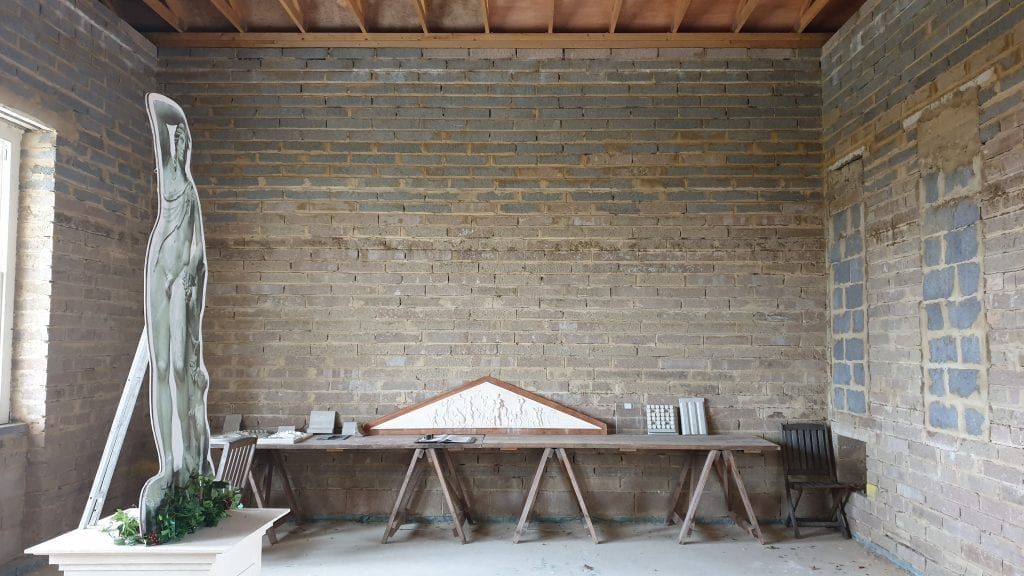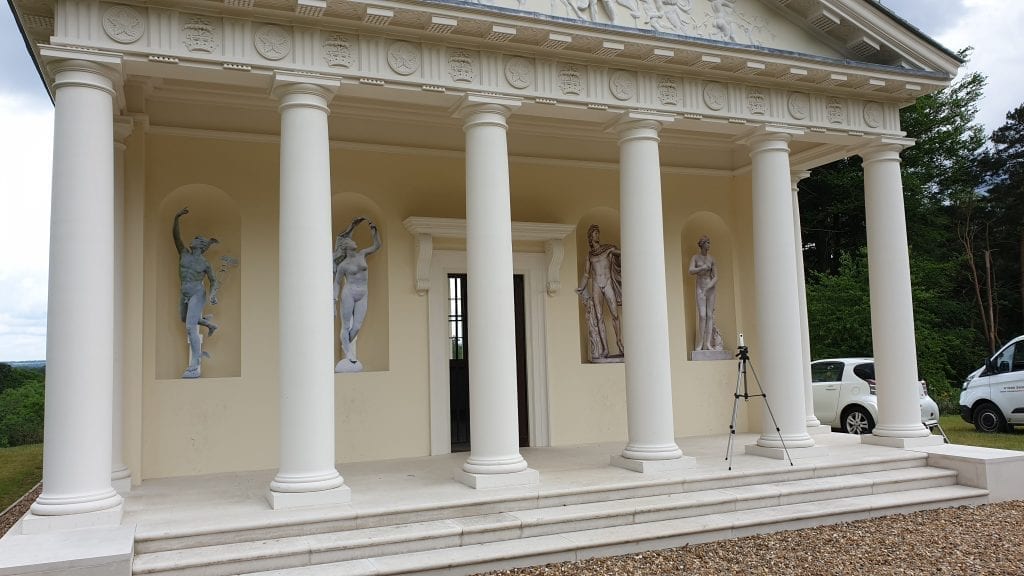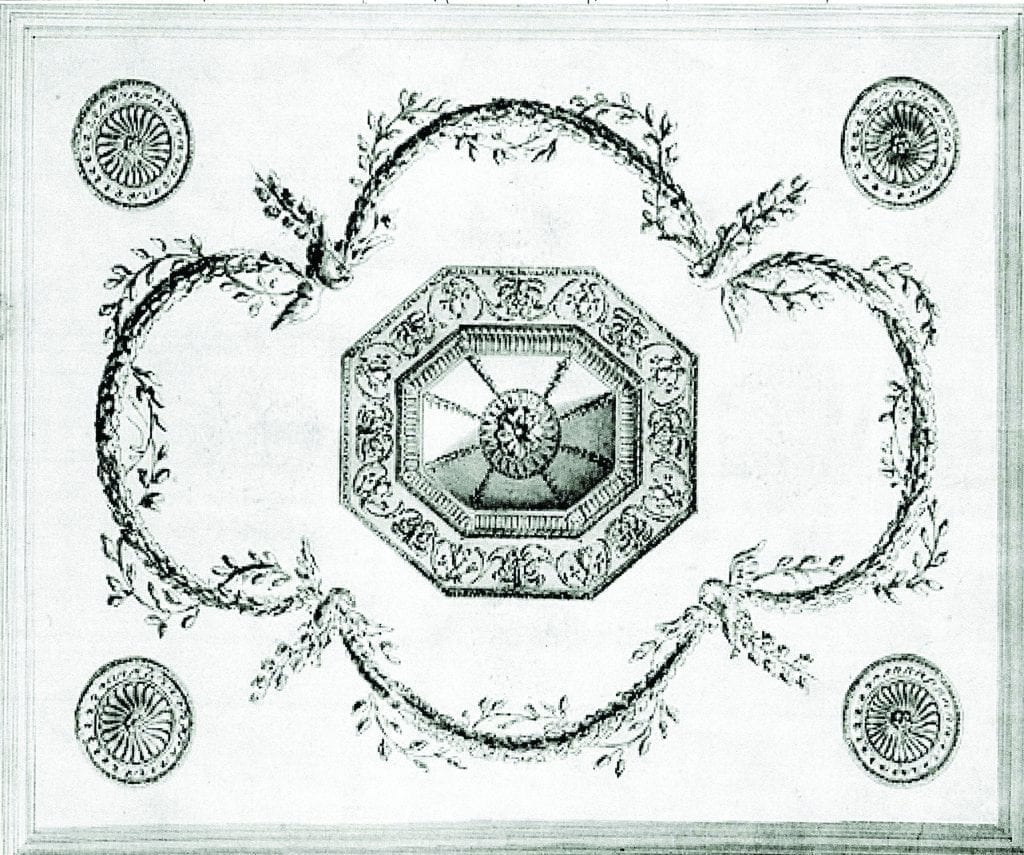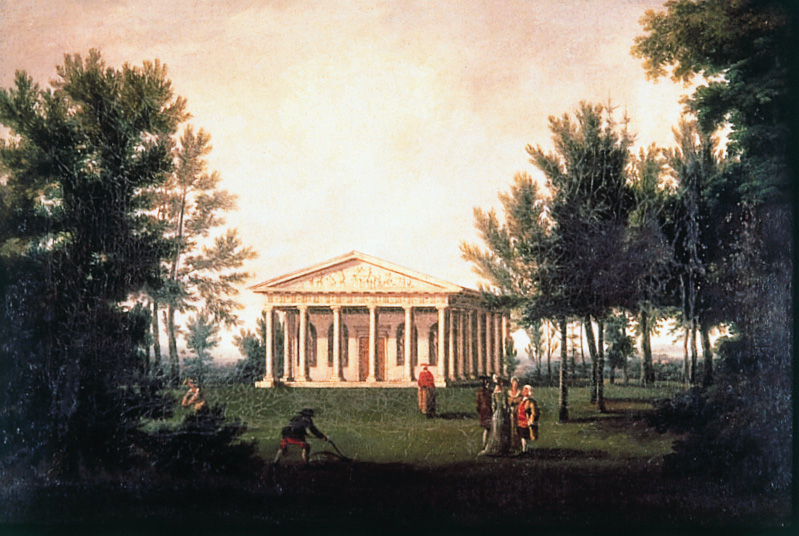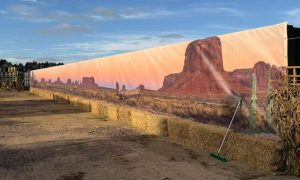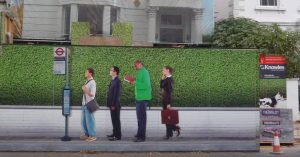Facade wrap can be used for many applications not just on building wraps. This print project is a good example of what we can achieve quickly and cost effectively.
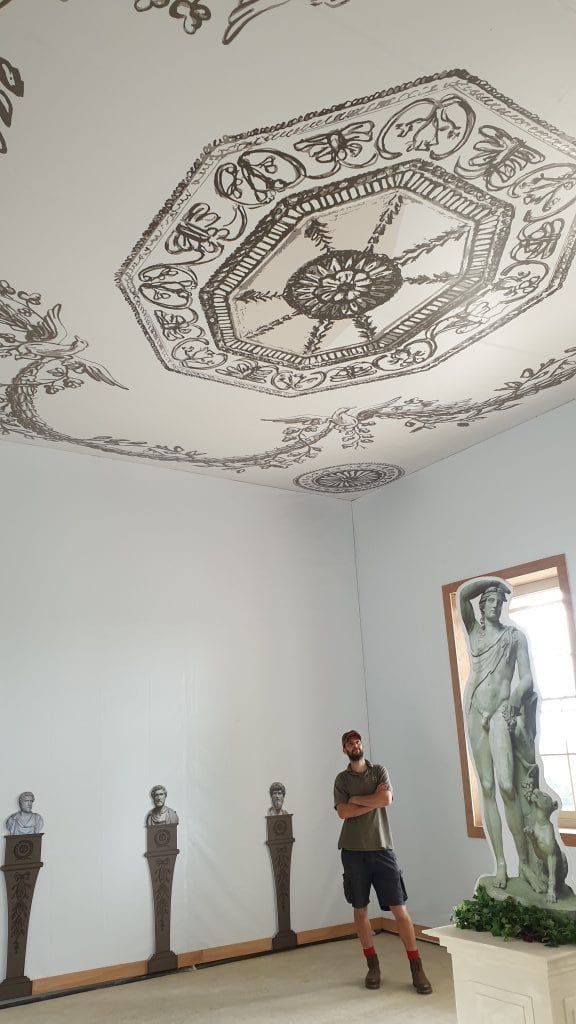
Painshill Park has restored The Temple of Bacchus which was the home to a collection of antiques by Honourable Charles Hamilton. The newly built temple internal area remained unfinished and the park needed to raise a further £500,000 to complete the temple. The Park’s head of Estates and landscapes contacted Project Print Management to assist them in temporarily decorating the internal area. This is so potential investors and sponsors could imagine what the temple will look like when completed.
Post from RICOH THETA. #theta360 #theta360uk – Spherical Image – RICOH THETA
The interior design we used a facade wrap
The external of the temple has been finished to a high standard however when looking inside of the raw construction was plain to see. Our mission was to cover the walls and ceiling with a façade wrap and to install printed replicates of the Roman busts on pedestals, just like it would have looked in 1763.
The walls needed to be covered in a white finish, so we used black backed PVC panels tensioned onto a timber frame. We used a black backed PVC to ensure the timber battens were not visible through the PVC.
Post from RICOH THETA. #theta360 #theta360uk – Spherical Image – RICOH THETA
Artwork for the Adams style ceiling.
The celling also needed to be covered with a façade wrap and this panel was the main feature. On the original temple the celling was decorated by the well known neoclassical style interior designers, Adams. We have a drawing dated 1761 of a rectangular ceiling with a central rosette enclosed by an octagonal panel containing a band of leaves and drops of calyx, framed by arabesques, and encircled by festoons of bell flowers entwined with vines, held by four eagles, and with a patera in each corner. It is also inscribed with Cieling for the Temple of Bacchus at Cobham. This drawing, however, was not going to be suitable to scan and print from. We decided to recreate the design as a vector graphic which gave us the flexibility needed to change the colouring and scale without affecting the quality of the print.
The ceiling was digitally printed high resolution onto a PVC size totalling 6.8 meters x 8.31 meters. As the print was hanging horizontally, we added rear ties every two meters to stop the panel from sagging.
Busts of Caesars and Statues
To add to the visual experience twelve busts on pedestals were digitally printed onto 10mm foamex panel and profile cut to shape. Four full size statues were also printed onto 10mm foamex with a standee at the rear and fixed into a concrete block to weigh the statue down.
History of the Temple of Bacchus
Bacchus was the Roman god of agriculture, wine and fertility and was the child of Jupiter. The temple was a small structure, built of wood, plaster and papier-mâché; completed in 1762, and surviving until the 1950s.
The Temple originally home to a collection of antiques collected by Hamilton during his Grand Tours across Europe, featured a 2.13 meter high marble centrepiece statue of Bacchus, as well as twelve marble busts of Caesars. The contents of The Temple of Bacchus were sold in 1797.
List of busts which might have been on display in the temple were:
Lucius Verus, Tacitus, Brutus, Julius Caesar, Augustus, Caligula, Septimus Severns, Commodus, Pertinax, Tacitus Paris, Antonius Pius, Trajan, Hadrian, and Septimius Severens.
Statues: Venus de Medici, Venus de Medici, Mercury, Apollo Del Belvedere.
For more information on facade wraps please visit here, or for our latest print projects please visit our blog.

Before Facade wrap 
Wall before wall covering 
External Statues 
Original drawing of ceiling 
Painting of The Temple of Bacchus


